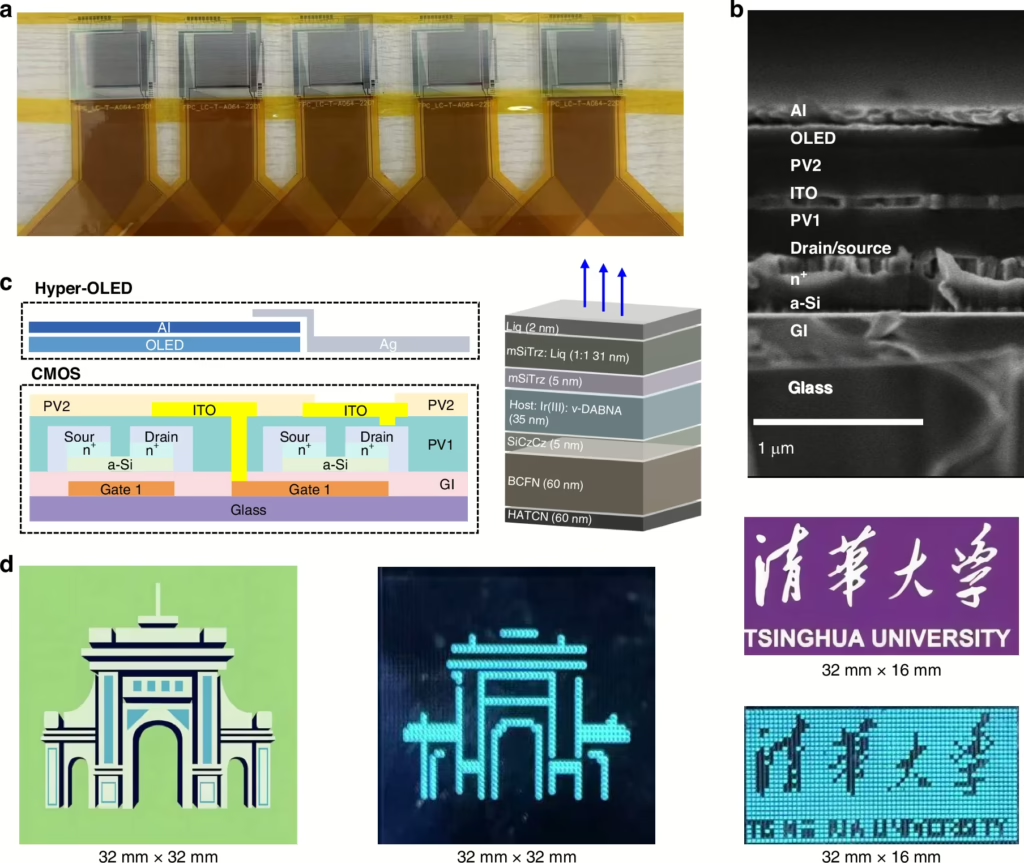Recent research by researchers in China, Wu et al. (2025), outlines an exciting development in blue PHOLED (phosphorescent organic light-emitting diode) performance. As most of us know, blue PHOLEDs have long been the Achilles’ heel of OLED technology. While red and green emitters have matured into commercially viable, long-lived components, blue PHOLEDs have consistently fallen short, suffering from poor operational lifetimes, unstable emission, and rapid efficiency loss at higher brightness levels.
This new research changes that landscape. The team introduced two novel iridium-based emitters, tBuCz-m-CF₃ and tBuCz-p-CF₃, that push the boundaries of what’s been possible for blue emission. The chemistry at the heart of this innovation involves integrating a bulky organic group called 3,6-di(tert-butyl)-9H-carbazolyl (abbreviated tBuCz) into the emitter’s molecular framework. What might sound like a purely structural tweak is actually a highly strategic intervention. The tBuCz group plays a dual role: it increases the spatial separation between molecules in the solid film (which reduces harmful intermolecular interactions), and it also spreads the location of the excited electronic states across a broader area of the molecule. This broad distribution of energy helps mitigate efficiency-killing phenomena such as triplet-triplet annihilation (TTA) and triplet-polaron annihilation (TPA), both of which become serious problems at high brightness levels. For context, these effects occur when excited energy states pile up and essentially “cancel each other out,” causing both performance loss and material degradation.
The new emitters demonstrated a photoluminescence quantum yield of 98% (nearly the theoretical ceiling), and an impressively fast radiative decay rate of 7.97 × 10⁵ s⁻¹. In devices fabricated using a co-host system, which supports energy transfer and charge balance, the researchers achieved a peak external quantum efficiency (EQE) of 31.62%, with a brightness ceiling exceeding 214,000 cd/m². Even more impressive, these devices held an EQE of over 20% at 100,000 cd/m², brightness levels that are more than sufficient for demanding use cases like augmented reality and outdoor mobile displays.
But the true headline for display manufacturers lies in the operational lifetime. Devices using these new emitters reached LT₅₀ values (the time to 50% brightness) of 1237 hours at 1000 cd/m², a record-setting benchmark for blue PHOLEDs. That level of performance substantially narrows the gap between blue and its red and green counterparts, moving us closer to all-phosphorescent RGB stacks for longer-lived OLED displays.

The researchers also demonstrated promising manufacturability. The emitters showed excellent thermal stability, with decomposition temperatures above 410°C and glass transition temperatures high enough to support vacuum thermal evaporation processes. The team fabricated active-matrix displays using these blue PHOLEDs at 400 pixels per inch on thin-film transistor (TFT) backplanes. Each pixel was independently addressable and maintained uniform brightness, validating the feasibility of integrating these emitters into high-resolution, programmable displays.
Color quality wasn’t sacrificed. The researchers implemented a hybrid strategy known as Hyper-OLED architecture by pairing their phosphorescent blue emitters with a narrow-band fluorescent emitter (v-DABNA). This setup, often referred to as phosphorescent-sensitized fluorescence (PSF), preserved high efficiency while improving color purity. The devices achieved a full width at half maximum (FWHM) of just 20 nm and CIE coordinates of (0.141, 0.233), metrics that translate into vivid, saturated blues with minimal spectral bleeding, ideal for premium displays and AR applications where visual clarity and precision are key.
This research signals a realistic path forward for stable, high-efficiency blue PHOLEDs with viable operational lifetimes. The combination of suppressed efficiency roll-off, excellent thermal and electrochemical stability, and full integration into AM-TFT backplanes gives this work enormous commercial promise.
Reference
Wu, C., Tong, KN., Shi, K. et al. Exceptionally high brightness and long lifetime of efficient blue OLEDs for programmable active-matrix display. Light Sci Appl 14, 156 (2025). https://doi.org/10.1038/s41377-025-01817-x

